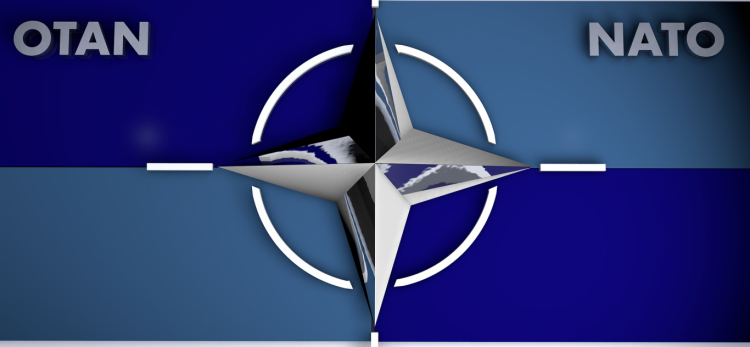NATO Enhanced Forward Presence in Latvia – A Historical Moment but not yet the End of History

First published in Baltic Rim Economies 4/2017:
https://www.utu.fi/en/units/tse/units/PEI/BRE/Documents/BRE_4_2017.pdf
In June 2017, Canadian-led NATO multinational battlegroup, consisting of more than 1,100 service-men and women from Canada, Spain, Italy, Poland, Albania, and Slovenia, was inaugurated in Latvia. It was a truly historical moment for Latvia as stationing permanent, though rotating allied forces was a distant dream even in 2013 – before the turbulent events in Ukraine unfolded.
Though Latvia has been a member of the North Atlantic Treaty Organization since 2004, it was so “on paper only” as the collective defence clause stipulated in the Article 5 of the 1949 North Atlantic Treaty was not supported by credible practical means. While NATO in the post-Cold-war-era increasingly focused on issues other than the collective defence, the only meaningful allied presence until the Ukraine crisis in the Baltics was the Baltic Air Policing mission and modest military exercises. At the same time, the potential existential threats from Russia (that materialized elsewhere, i.e. in 2008 in Georgia, and since 2014 in Ukraine) were underestimated by most of the allies. Furthermore, Russia was considered to be a partner and any potential meaningful allied military presence on the alliance’s Eastern Flank was almost a taboo. Western allies were unwilling to antagonize Russia, which would protest any expansion of the NATO military presence towards its borders, and wished to abide to the 1997 NATO-Russia Founding Act. In this act, NATO ambiguously committed to not permanently station additional “substantial combat forces” in order to fulfil its collective defence duties. However, contrary to the arguments of Russia, the recently established NATO allied presence in Latvia cannot be reasonably considered as substantial when compared to the military of Russia which, furthermore, as the other party of the aforementioned Act has clearly violated the document, e.g. by not “refraining from the threat or use of force (…) against any other state, its sovereignty, territorial integrity or political independence (…)” (i.e. what it did in fact in both Georgia and Ukraine).
However, the allied presence attained is not the end of history for Latvia. Russia will remain a source of risks to the national security in the foreseeable future; and Latvia alone will not be able to defend itself against a possible conventional or non-conventional aggression. Therefore, it is clearly in the national interests of Latvia to retain and expand the allied military presence as much as possible, although retaining and expanding the allied presence can become an even more difficult task than attaining the current presence was. There is little doubt that Russia will do its best to end the allied presence in Latvia. It will probably not only continue to criticize allied presence in Latvia (as well as in the other two Baltic States and Poland), but also use other active measures to cease the NATO allied presence near Russia’s western border – if not in a short-term then definitely in a medium-term. It is likely that it will use “divide and rule” approach with the NATO member states – by exploiting the potential fatigue and internal interests of the troops’ contributing nations. If the situation in Ukraine is further “frozen” and no new regional Russia-related conflicts and provocations at the Eastern Flank of NATO emerge, one can imagine that Western entrepreneurs might call for using the business
opportunities with Russia while pacifist groups might call to bring the soldiers back home. Such moves could be facilitated by Russia by using business groups and non-governmental organizations as well as information operations to influence the opinion of the respective general public and governments.
However, it is not only about Russia when the allied military presence in Latvia is considered. It is also about what Latvia will or will not do to support the allies elsewhere. Latvia has to provide the best possible living and training conditions for the allied militaries (e.g. not yet all allied soldiers have the possibility to live under the “hard roof” while stationed in Latvia). It would also be wise to build larger barracks and other infrastructure to house considerably higher number of allied troops in the case there was a necessity to deploy them or a window of opportunity to relocate allied forces from other countries to Latvia.
Similarly, Latvia has to be supportive of the political and economic interests of the troops’ providing nations in order to reciprocate. E.g., it should consider procuring military equipment from those nations – not only as an expression of appreciation, but also as a way to strengthen the military cooperation and mutual interoperability. It is also worth considering sending more troops to international operations abroad. Paradoxically, at the time when NATO allies had less solidarity with Latvia (before the Ukraine crisis unfolded), the latter provided considerable number of troops to international operations abroad – almost 400 soldiers served in Afghanistan and Iraq at some of the peak years. Now, however, Latvian contribution to the international operations has considerably decreased – to under 100 soldiers per year since 2015. Latvia should not only consider strengthening its presence in international operations that are significant to some larger allies, but also consider sending one or more units as a part of the Enhanced Forward Presence to Poland, Lithuania or Estonia. It would not be an unusual act as Poland, being assured under the same initiative, is contributing troops to Latvia. In other words, to attain a long-term commitment from allies, Latvia not only has to ensure its own defence to the extent it can, but should also reciprocate to the allies as much as possible.
Publicēts 20. decembris, 2017

